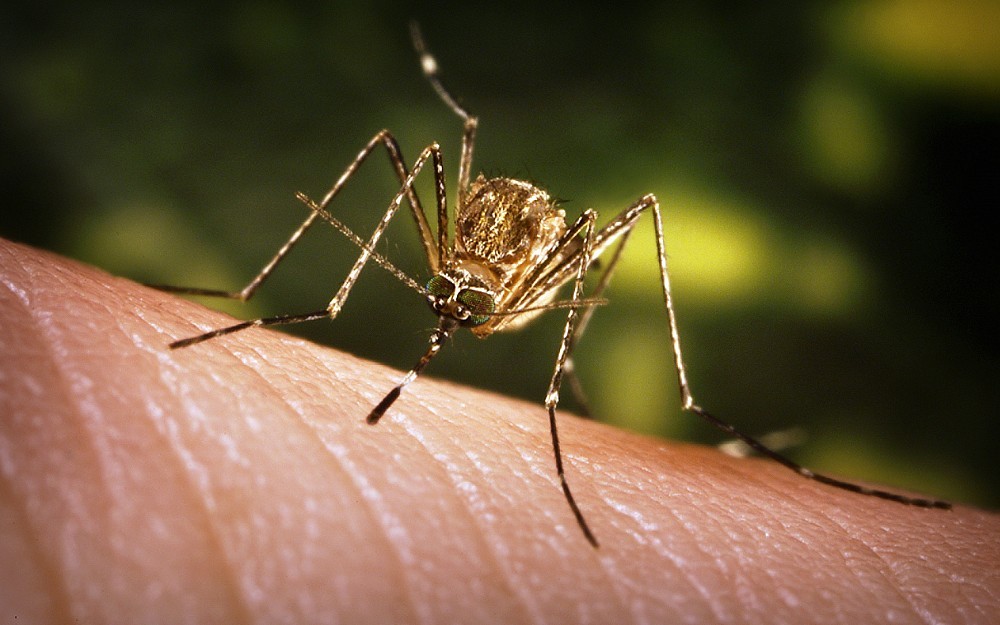
UC HEALTH LINE: Avoid Bug Bites Safely With Home Changes, Repellents
CINCINNATISummer can be a tricky balance between enjoying the great outdoors and being driven indoors to avoid irritating bug bites. Applying sprays, lotions, or using treated wrist bands to repel ticks and mosquitoes quickly becomes a daily ritual.
Toxicologist Mary Beth Genter, PhD, an associate professor in the University of Cincinnati College of Medicine environmental health department, cautions people to remember that insect repellents are, by definition, pesticides so caution and proper application are important to avoid negatively impacting human health. The U.S. Environmental Protection Agency (EPA) defines pesticides as chemicals that are designed to "prevent, destroy, repel, or mitigating any forms of life declared to be pests.
The most common and effective bug repellent is DEET (N, N-diethyl-meta-toluamide), a chemical developed by the U.S. Army in 1946 to help protect soldiers on the battlefield. It was introduced to the public consumer market in 1957.
"DEET is believed to work by confusing insects so that they cannot recognize humans as something they want to bite. In the grand scheme of things, the chemical is relatively safe, says Genter. "Like any pesticide, though, consumers should use caution and follow the application instructions specifically to avoid harm.
Health concerns with DEET-containing bug repellents stem from the skins barrier function, particularly with young children. The American Academy of Pediatrics recommends abstaining from using bug repellent in children under 2 months of age and restricting use in children under the age of 10 to products with a DEET concentration of 10 percent or less. It is also recommended that DEET not be applied to childrens hands or around their mouths to avoid ingestion.
The EPA conducted an extensive safety review of DEET in 1998 and concluded thatwhen used as instructedDEET was an effective topical bug repellent safe for human use.
"The best advice is to use pesticide-containing products in moderation and following the application instructions specifically, adds Genter.
Although most people are driven to bug repellents to avoid the irritating itch and discomfort that follows a bite, the real benefit is disease prevention. According to the EPA, mosquitoes can transmit diseases like St. Louis encephalitis and West Nile virus. Ticks can transmit Lyme disease, Rocky Mountain spotted fever, and Ehrlichiosisall of which have serious health consequences.
"Creating a home environment that discourages tick and mosquito development is one of the best means of prevention. This includes eliminating sources of standing water where mosquito larvae thrivecontainers, gutters, fountainsand keeping your lawn and fence lines trimmed. Ticks like to hang out in tall weeds and grass, says Genter.
Tips for the safe use of bug repellent include:
- Wash treated skin immediately with soap and water upon going indoors.
- Do not apply repellent spray or lotion to open wounds or cutsthis raises the potential that the chemical will penetrate the skins barrier and begin circulating throughout the body.
- Apply repellent to exposed skin and clothing. Do not apply under clothing.
- Avoid over-application by reading and following the products label guidelines.
- Wash exposed clothing before re-wearing.
- To apply to face, spray on hands then apply manually versus spraying directly.
- Do not spray in enclosed areas.
- Keep out of reach of childrenadults should apply insect repellents to children.
If you choose to use bug repellents, the EPA maintains a list of registered products it certifies as both safe for humans and effective. These products will display and EPA registration number on the label. Certain "minimum risk pesticidesincluding many essential oilsare not required to undergo safety and effectiveness testing and obtain EPA registration. To learn more, visit epa.gov.
Related Stories
2024 Daniel Drake Medals to be awarded April 27
April 24, 2024
The UC College of Medicine will award three people with 2024 Daniel Drake Medals April 27.
Local 12: Head injury survivor, doctor share importance of...
April 23, 2024
Local 12 spoke with patient Shane Shapiro and the University of Cincinnati's Laura Ngwenya about the importance of wearing a helmet following Shapiro's traumatic brain injury and recovery.
UC hires Dr. Gregory Postel as senior vice president of health...
April 23, 2024
UC Board of Trustees vote to hire Dr. Gregory Postel as senior vice president of health affairs and dean of UC College of Medicine.
